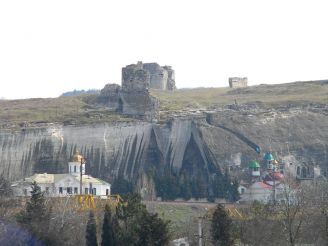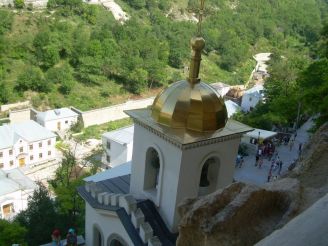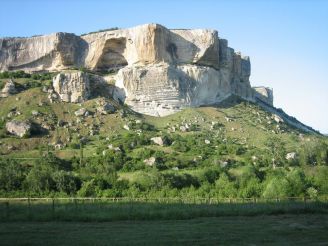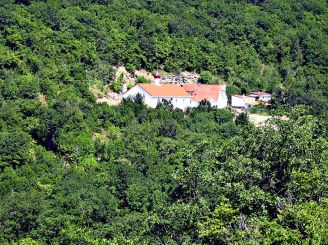St. Clement Cave Monastery
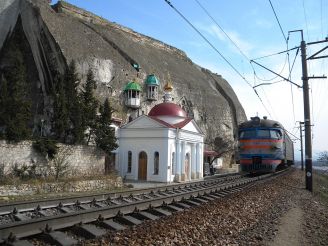
Inkerman Crimean city known all over Ukraine and abroad thanks to wine, which has been more than a century produces Inkerman Winery. However, this is not its only outstanding attraction. You'll see this when visiting inside the cave monastery of St. Clement. It is no accident that the city Inkerman translated from Turkic language as a "cave fortress."
History of the creation of the cave monastery begins with the construction in the 6th century in the monastery rock defensive fortifications Kalamita, which was part of the monastery complex. According to legend, St. Clement himself - Bishop of Rome, supervised the construction of this cave temple in the rock, when he was sent to Chersonesus quarry for preaching Christianity. There are several theories about the time of the construction of the shrine. According to the first - St. Clement Monastery was built in 8-9 centuries, and in another version - in the 14-15 centuries. Perhaps this is due to the fact that the church is not just fell into decay, and then rebuilt. At the same time, it is one of the few operating in the territory of Ukraine cave temples.
St. Clement Monastery is a unique creation of Byzantine architecture 8-9 centuries. Initially, internal rooms, carved in the rock of the Monastery, were living quarters for the monks. From the main entrance was a long corridor, at the end of which was a small room with stone benches, throne and altar. Apparently, her monks expected time of church services. In the rock there are three main areas in which services were held earlier. This is the church of St. Martin the Confessor, Panteleimon church and the church of St. Nicholas of Myra. Temples have survived to the present day, so visit these memorials. In the apse of the third temple is a large carved stone cross, at the ends of which extend smaller crosses. This architectural detail used in the Byzantine temple buildings from the 10th century. Preserved Greek inscription says on the inviolability of a stone shrine. In the same apse placed the throne of the bishop, as well as the remains of soprestoliya behind which was hollowed out a niche for the image. Also, the remains of ancient columns, which made this monastery with three naves. In general, a monastic cave complex in Inkerman is in the form of the basilica.
The building of the monastery of St. Clement played a role in the Great Patriotic War. It hid the detachment of Soviet troops, which gave resistance to the enemy on the approaches to Sevastopol.
Now you can visit the Church of St. Clement, part of which was reserved for the museum. Walk to the holy places, look at the rooms that are interconnected in a body carved rock stairs. There is a walkway that leads up to the fortifications Kalamita. From there, a beautiful view of the valley of Inkerman, spilling the Black River, and then - the Black Sea.
Get to St. Clement Monastery of Sevastopol as possible by sea from the Count's Quay, and on land - by train, bus or taxi to a stop in 1531-km.






